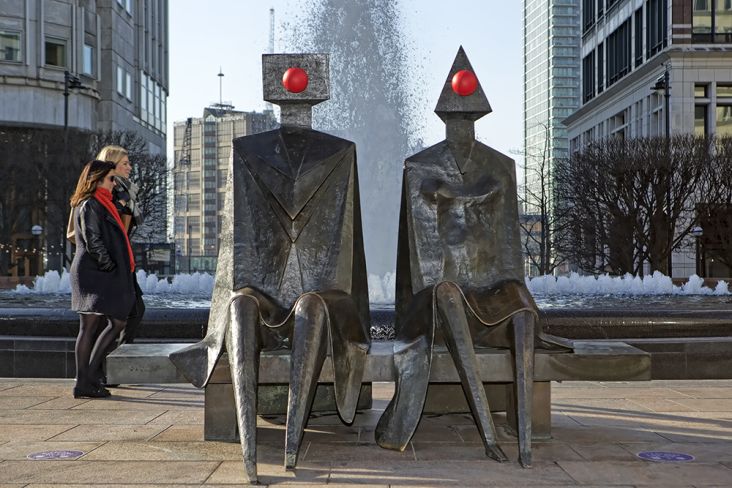10 surefire ways to completely rock your first client meeting
You’ve had the best news. A potential client is impressed with your website and has enjoyed chatting with you over the phone, and now they want to meet in person. You’re one step closer to winning their business.

Image licensed via Adobe Stock
But, likely, you won’t be the only freelancer that client is thinking about hiring. With so much competition, how do you win that client over? How do you ensure you stand out from the crowd during that first meeting and beat everyone else to it?
It’s easier than you think. You need to know a few key ingredients to create the winning recipe that gets you the work. So when meeting a prospect for the first time to pitch your own business, the following tips will put you on the right track to success.
1. Prepare for the meeting
Sounds like an obvious first tip, but make sure you adequately prepare yourself for the meeting. Know exactly where you’re going, so you don’t get lost and arrive late. Write down the name of the people you’re meeting, so you don’t forget who you’re meeting. And dress for success by wearing smart and professional-looking clothes. Ok, you work in the creative industries, but that’s no excuse to wear scruffy jeans and trainers. You should play it safe and scrub up accordingly.
You should also prepare your materials, so you’re relaxed and calm during the meeting, and don't come across as flustered and under-prepared. That means preloading your website or online portfolio on your laptop or tablet, and ensuring you have a working pen and notepad ready to go.
Finally, you should practice your pitch and know what you’re going to say. You’ll have a rough idea of what the potential client needs, so make sure you’re able to address those needs by having a range of suggestions and advice ready to offer.
2. First impressions count
When you walk into the room and meet the prospect in person for the first time, you want to ensure you give the best impression. Adopt a good posture and an air of confidence. Look them in the eye, smile, be open and provide a firm handshake with your right hand. Always allow the client to sit at the meeting table first before you settle in your seat.
3. Enjoy a little small talk
Before you launch into the serious stuff, it’s always a good idea to enjoy a little small talk. You don’t want to immediately pitch your business, as it might make you appear too pushy. Instead, mention something about the weather, discuss a recent sports event or ask how they are. Just stick to safe topics and be positive.
Don’t, whatever you do, moan about the traffic, the weather or anything, as this will make you come across as annoying. Remember, business is about people. And people want to do business with people they like. So don’t underestimate the power of small talk.
4. Play it cool, Rodney, my son
While it’s always great to be likeable, it’s still a good idea to be quietly confident rather than appear over-keen. It’s a strange thing to say, but you want to treat a prospect like you would a first date because any whiff of desperation will backfire.
You almost want to sound as though you don’t need the work. That you’re in demand and busy, this will entice the prospect and, weirdly, only make them want you more.
Of course, you don’t want to overdo it. There’s a fine line between confidence and arrogance. So keep telling yourself in your head that you’d love the work, but it’s no big deal if you don’t win it.
5. Let them do the talking
When the small talk is over, a client loves to talk about their business. Ultimately, it’s their baby, and they want to show it off to the world proudly. In which case, close your mouth and listen. Let them talk for as long as they wish. Listening is one of the critical tips in How to Win Friends and Influence People, where it states:
One of the great listeners of modern times was Sigmund Freud. A man who met Freud described his manner of listening: "It struck me so forcibly that I shall never forget him. He had qualities which I had never seen in any other man. Never had I seen such concentrated attention. There was none of that piercing 'soul penetrating gaze' business. His eyes were mild and genial. His voice was low and kind. His gestures were few. But the attention he gave me, his appreciation of what I said, even when I said it badly, was extraordinary, You've no idea what it meant to be listened to like that.”
So be attentive, focus on the client with high concentration and be interested in what they have to say. Your time will most certainly come to speak. Until then, sit back and listen.
If necessary, throw in a few words or gestures of support, showing that you understand and you’re interested. It’s a subtle form of reassurance, allowing the talker to feel comfortable and confident in their delivery.
6. Discuss their needs and ask questions
Once the prospect has got everything off their chest, it’s time to discuss their needs in more detail. Don’t be afraid to ask questions and take some notes that you can refer back to in future. Just little pointers to help you structure the meeting and ensure you’ve not missed anything important.
This is not only a chance to fully understand what the potential client needs, but it’s also an opportunity to show off your consultancy skills and demonstrate how much you care about their business and how you can help.
7. Don’t forget to sell yourself
When you’re talking through how you can help, it’s always a fantastic idea to throw in some examples of where you’ve successfully supported other clients. Have some success stories ready to show off. Dig your website or portfolio out, and talk through previous projects.
It’s a good idea beforehand to practice how you pitch each case study. Because you’ll want to talk confidently yet concisely about how you’ve helped others, rather than ramble on and forget the key points. You’ll only bore yourself and everyone else.
Think of each case study as a story and structure them accordingly, i.e. someone came to you for help, you addressed their needs, and there was a happy ending.
Have some statistics ready, if possible. For example, have you built a website that increased traffic by 20 per cent? Tell the prospect all about it. Did a marketing campaign online lead to lots of new enquiries? Don’t be afraid to show off and demonstrate how your expertise has helped.
While talking through your work, throw in some of your own USPs. It’s not crass to mention the attributes and skills you have that make you stand out from the crowd. Don’t be shy. This is your moment to shine.
8. Offer some friendly free advice, with no expectations
In this dog-eat-dog world, where it’s difficult to know who to trust, you’ll surprise and delight the prospect if you offer a little friendly advice for free. Something that they can do to improve their business without anyone’s help.
You’ll instantly build rapport and trust, not just because you’re showing that you care and that you’ve done your research – but because you’re also demonstrating your expertise. This means you'll be well on your way to building a stable working relationship with them. It will, therefore, be much more difficult for the prospect to choose anyone else.
9. Anticipate those frequently asked questions
Is the client hanging on your every word? Meeting going well? Have you said pretty much everything you wanted to say? Now comes the inevitable part. Those frequently asked questions that prospects love to ask.
But don’t panic! If a client is asking you more questions, it’s usually a positive sign that they’re considering hiring you. Just make sure you anticipate them and have some well-prepared answers.
For example, clients love to ask about day rates or whether you’ve got any experience in their particular industry. They might ask to see more examples of work. Anticipate what they might ask and be fully prepared to blow them away.
10. Wrap things up nicely and follow up
Pat yourself on the back! You’ve just rocked your first client meeting, and things are looking positive. But it’s not over yet. You need to leave a lasting, positive impression so ensure you wrap things up nicely.
Smile and be confident. Say how you’ve enjoyed talking about their business and thank them for their time. Leave a business card, if you haven’t already, and say you’re happy to discuss anything further over the phone.
Remember, that final impression is just as important as the first. So make sure you tidy up after yourself, tuck your chair back under the meeting table, refrain from using your phone until you’ve left. Be ready for some small talk on the way out, just in case.
A week or so later, follow things up with a friendly email or phone call. To show that you’re still available if the prospect wants to discuss anything further. After such a successful meeting, you’ll most likely win the work. But if you haven’t, don’t take it personally and don’t let it dent your confidence. You win some; you lose some. And it’s all helpful experience in the end.
Some final key pointers
Here are just a few extra tips on how to conduct yourself during that first client meeting, so you do rock and win the business:
- Smile and relax. Enjoy talking to them and don’t worry about anything. You’ve nothing to lose and everything to gain, so chill!
- Use their first name throughout the meeting. It adds a personal touch and, as How to Win Friends and Influence People says – it’s the most magical sound in the world, hearing your name.
- Be cool, calm and confident. Pretend like you’ve pitched yourself a million times before. If you act the part, you’ll most definitely come across as a seasoned professional.
- Pretend you’ve already won the work and that you’re just finalising the details. Treat the prospect as though you’re already working together.
- If you’re seeing more than one person, and you’re not sure who to focus on, you’ll need to quickly figure out who holds the purse strings and who you need to win over, and then talk directly to them. Just don’t forget anyone else in the room, and try and make an effort to make eye contact with everyone.
- If you’re letting your nerves get the better of you, stop the internal demons by focusing entirely on the other person. Clear your head of negative thoughts and bring your mind back to the present.




 by Tüpokompanii](https://www.creativeboom.com/upload/articles/58/58684538770fb5b428dc1882f7a732f153500153_732.jpg)

 using <a href="https://www.ohnotype.co/fonts/obviously" target="_blank">Obviously</a> by Oh No Type Co., Art Director, Brand & Creative—Spotify](https://www.creativeboom.com/upload/articles/6e/6ed31eddc26fa563f213fc76d6993dab9231ffe4_732.jpg)


](https://www.creativeboom.com/upload/articles/21/212b36fa1d576a9ea1aeb322ef0cffd6a5009e61_732.png)














